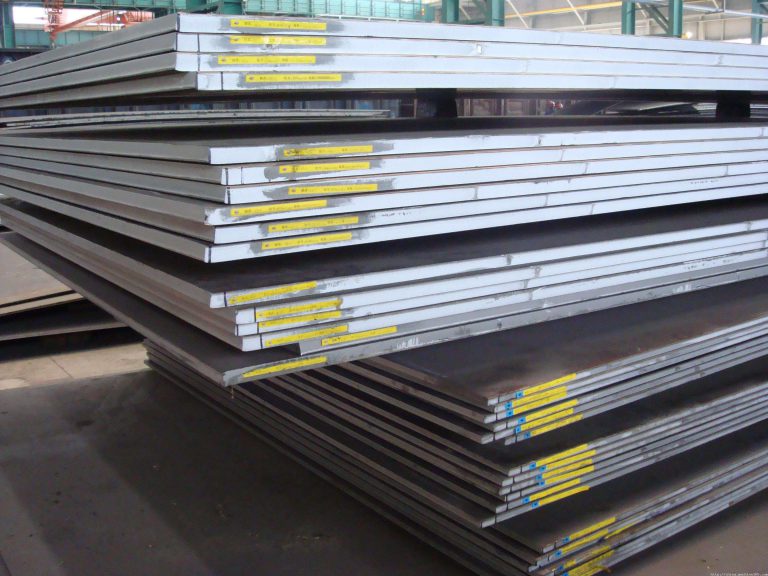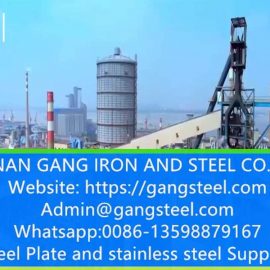asme sa516 grade 70 chemical composition
SA516Gr.70 is widely used in petroleum, chemical, power station, boiler, and other industries used to make reactors, heat exchangers, separators, spherical tanks, gas tanks, liquefied gas tanks, nuclear reactor pressure shells, boiler drums, liquefied petroleum
Equipment and components such as gas cylinders, high-pressure water pipes of hydropower stations, and turbine volutes.
A516Gr70N meets the requirements of (ASME) ASTMA516/A516M standards, and fully meets the needs of oil gas with a high content of sulfur and hydrogen, reduces sulfur and hydrogen corrosion, reduces equipment maintenance, and increases equipment service life.
The steel plate has the following characteristics: good impact resistance, low-temperature deformation, good welding performance, good fatigue resistance, good anti-layer cracking performance, microalloying, high purity, low carbon equivalent, strong resistance to sulfur and hydrogen,
The products have good dimensional tolerances and surface quality.
We are ASME SA516 Gr.70 and ASME SA516GR.70 steel plate manufacturers,SA516GR.70 stocklist, SA516GR.70 cutting parts, SA 516 GR 70 machined parts supplier. Gangsteel exporter ASME SA516 Grade 70|ASME SA516GR.70 steel plate. SA516GR70 is a carbon pressure vessel steel grade. ASME SA516 GR.70 steel plates stock supplier.Keywords: ASME A516 Grade 70, ASME A516GR.70, ASME A516GR70, ASME A516 GR.70 SA516 Grade 70 steel is a carbon pressure vessel steel grade for moderate and lower temperature service.
SA516 Grade 70 usual request normalized if thickness above 40mm, if not, Gangsteel usual delivery in hot rolled or control rolled station. A516 Gr.70+N or A516gr70N mean that steel grade must be normalized in any thickness.

Surgical instruments and medical gear are normally made from stainless-steel, due to its sturdiness and ability to be sterilized in an autoclave. The largest use of stainless-steel in vehicles is the exhaust line. They are used for collector, tubing, muffler, catalytic converter, tailpipe. Heat-resisting grades EN1.4913 or 1.4923 are used in elements of turbochargers, whereas different warmth-resisting grades are used for exhaust gas recirculation and for inlet and exhaust valves.
Heat treatment
1.·SA515Gr60, SA515Gr70, SA516Gr60, SA516Gr70, SA516Gr60N, SA516Gr70N thickness ≤1.5in, (40mm) steel plate is usually supplied in rolled state, steel plate can also be ordered by normalizing or stress relief, or normalizing plus stress relief.
2. Thickness>1.5in.(40mm) steel plate should be normalized.
3. Unless otherwise specified by the buyer, the thickness ≤ 1.5in, (40mm) steel plate, when notch toughness is required, normalizing should be carried out.
4. If approved by the buyer, it is allowed to use a cooling rate greater than that in the air to improve toughness, but the steel plate only needs to be in the range of 1100-1300°F (595-705°C) subsequently
6% Mo superaustenitics are used in the bleach plant and Type 316 is used extensively in the paper machine. Galling, sometimes called chilly welding, is a type of severe adhesive wear, which may occur when two steel surfaces are in relative movement to each other and beneath heavy strain.
The tensile strength of SA516Gr70 is 70 kilopounds per square inch, which is more than 482 as everyone usually says.
The main element content is C Mn Si, and the control of p and s determines its performance.
There are very few other trace elements.
Standard Specification for Carbon Steel Plates for Medium and Low-Temperature Pressure Vessels
SA516Gr70 Chemical detail
C≤0.30��Mn��0.79-1.30��P≤0.035��S��≤0.035��Si��0.13-0.45
SA516Gr70 Property Grade U.S (SI), Tensile strength ksi(MPa) 70 (485) and 70-90 (485-620)
The materials may have scratches, pits, and dents however is made to the present specs. Some 3D printing providers have developed proprietary stainless-steel sintering blends to be used in speedy prototyping. One well-liked chrome steel grade used in 3D printing is 316L stainless steel. However, stainless steel isn’t as commonly used as materials like Ti6Al4V, because of the availability of less expensive traditional manufacturing strategies for stainless steel.
- Resistance to corrosion and marking, low maintenance, and acquainted luster make chrome steel a super materials for many functions where both the power of metal and corrosion resistance are required.
- Other gases, similar to sulfur dioxide, hydrogen sulfide, carbon monoxide, chlorine, also attack chrome steel.
- Type 304, the commonest grade of stainless-steel with 18% chromium, is resistant to roughly 870 °C (1,600 °F).
- The minimum 10.5% chromium in stainless steels supplies resistance to approximately seven hundred °C (1,300 °F), whereas 16% chromium offers resistance as much as roughly 1,200 °C (2,200 °F).
- Moreover, stainless-steel may be rolled into sheets, plates, bars, wire, and tubing.
- Resistance to other gases relies on the kind of gas, the temperature, and the alloying content material of the stainless-steel.
ASME sa516gr70 equivalent
Galvanic corrosion (additionally called “dissimilar-metallic corrosion”) refers to corrosion injury induced when two dissimilar supplies are coupled in a corrosive electrolyte. The most typical electrolyte is water, starting from freshwater to seawater. When a galvanic couple types, one of the metals within the couple turns into the anode and corrodes faster than it will alone, while the opposite turns into the cathode and corrodes slower than it would alone.
Thus, austenitic stainless steels are not hardenable by heat treatment since they possess the identical microstructure at all temperatures. But they all have carbon content throughout the above-talked about limits. Other elements are added to improve helpful properties like corrosion resistance, put on resistance and tensile energy. An average chrome steel object is composed of about 60% recycled material of which roughly forty% originates from finish-of-life merchandise, while the remaining 60% comes from manufacturing processes. What prevents the next recycling content material is the supply of stainless-steel scrap, regardless of a really excessive recycling fee.
What is meant by Killed carbon steel?
What is killed carbon steel? Steel that has been completely deoxidized by the addition of an agent such as silicon or alumimium, before casting, so that there is practically no evolution of gas during solidification. Killed steels are characterized by a high degree of chemical homogeneity and freedom from porosity.
ASME sa516gr70 datenblatt
In addition, widespread rail injection techniques and their injectors depend on stainless steels. Stainless steels are used extensively within the pulp and paper trade to avoid iron contamination of the product and due to their corrosion resistance to the assorted sa516gr.70 steel supplier chemical compounds used within the papermaking course of. For instance, duplex stainless steels are utilized in digesters to convert wooden chips into wood pulp.

